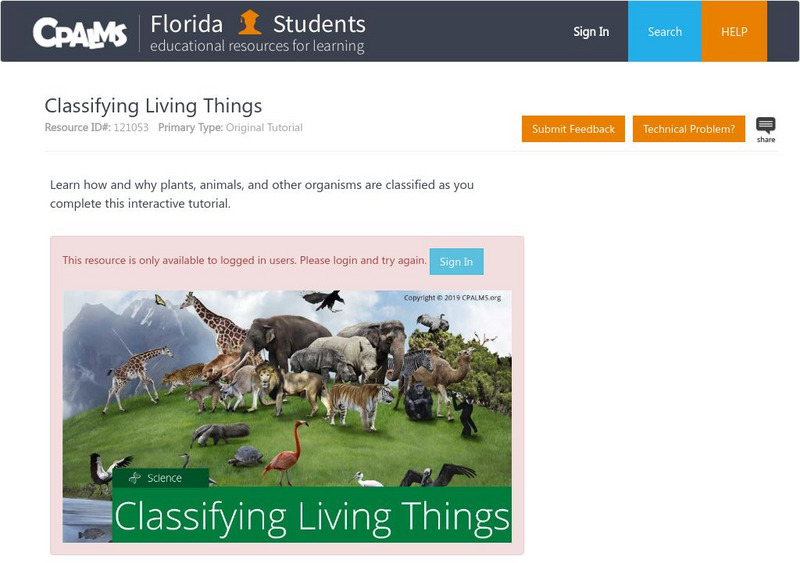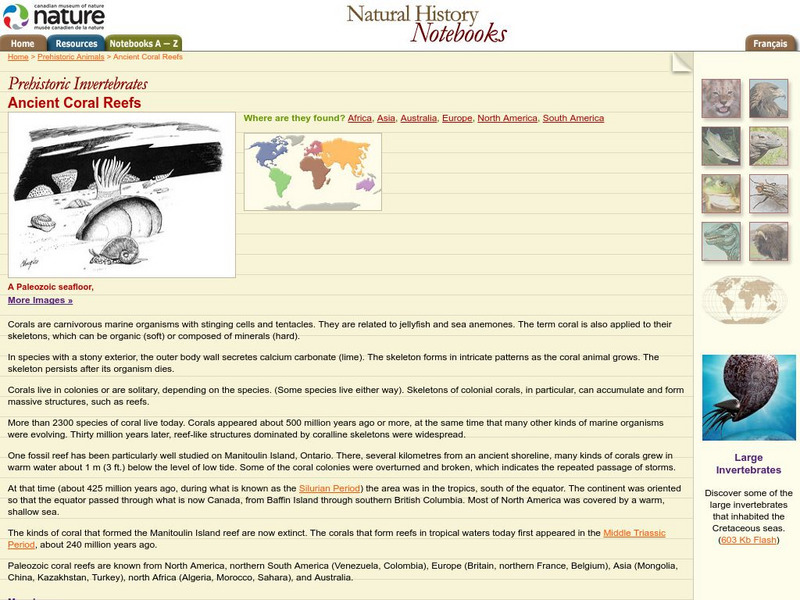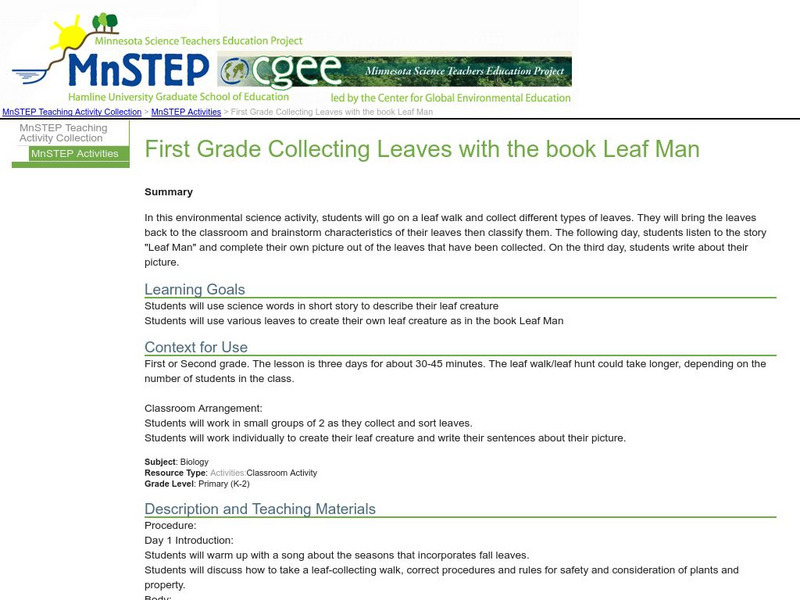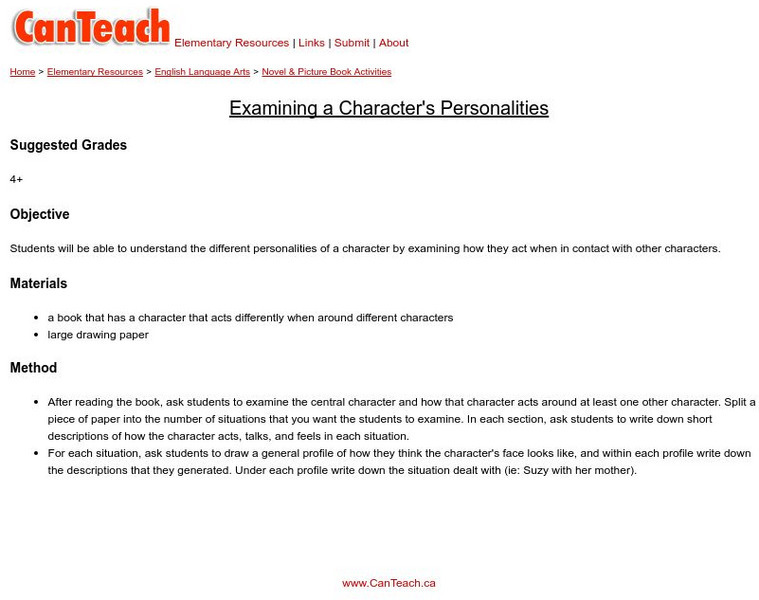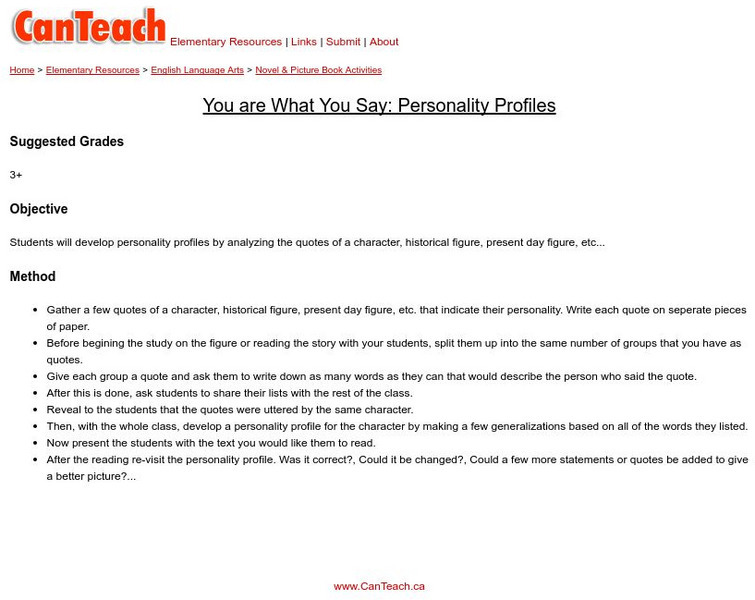CPALMS
Florida State University Cpalms: Florida Students: Classifying Living Things
Learn how all living things are classified.
Books in the Classroom
Carol Hurst's Children's Literature Site: Eric Carle
What do you know about Eric Carle, the author? This Carol Hurst site highlights some interesting facts about this author's life and refers to some of his books.
Canadian Museum of Nature
Canadian Museum of Nature: Ancient Coral Reefs
The Canadian Museum of Nature provides characteristics and ancient history of global coral reefs.
Oswego City School District
Regents Exam Prep Center: Working With Sets and Venn Diagrams
A collection of activities that help students understand number relationships by using Venn diagrams to solve math problems. Practice problem solving skills in the interactive practice. Then, follow up with a classroom activity using the...
Council for Economic Education
Econ Ed Link: What Is Money? Why Does It Have Value?
In this lesson, students consider the fact that the value of money differs depending on where the money is being spent. In order to understand this idea, students will first develop a deeper understanding of what it means for money to...
CommonLit
Common Lit: Book Pairings: "The Great Gatsby" by F. Scott Fitzgerald
Nick Carraway observes the wasteful lives of four wealthy acquaintances in the nouveau riche society of West Egg, Long Island. During his time there, Carraway befriends his affluent and enigmatic neighbor, Jay Gatsby. Selected (10)...
Center for Educational Technologies
Earth Science Explorer: Diversity
Written for younger students, this site explains biodiversity and links to easy to understand explanations of species and genetic diversity.
Canadian Wildlife Federation
Hinterland Who's Who: Wildlife
Find an wide range of information on an incredibly wide range of species in Canada, including those that are at risk.
PBS
Nh Pbs: Nature Works: Estuaries
Learn more about estuaries when you visit this informative site. This resource provides locations of and weblinks to estuaries in the United States.
Oregon State University
Oregon State University: Dichotomous Key
An excellent starting point. Get a good description of what the dichotomous key for tree identification is and then directions for using it to identify trees.
Science Education Resource Center at Carleton College
Serc: First Grade Collecting Leaves With the Book Leaf Man
In this environmental science activity, students go on a leaf walk and collect different types of leaves, and then brainstorm characteristics of their leaves then classify them.
The Franklin Institute
The Franklin Institute: Classified
At this site from The Franklin Institute you can practice classifying objects according to physical structure and characteristics.
Discovery Education
Discovery Education: Animal Classification
Use this lesson plan to help students understand the reasons for classifications and ways that different species are separated.
ClassFlow
Class Flow: Reptiles and Amphibians
[Free Registration/Login Required] This flipchart provides basic information for the characteristics of reptiles and amphibian and life cycles. Videos show reptiles and amphibians that can cruise through the air, and an alligator mom...
Can Teach
Can Teach: Examining a Character's Personalities
In this lesson plan students will be able to understand the different personalities of a character by examining how they act when in contact with other characters. Lesson plan indicated for 4th grade and above.
Can Teach
Can Teach: Introduction to Character Traits
In this lesson plan middle schoolers will better understand what and how to generate the traits of a character. Lesson plan indicated for 4th grade and above.
Can Teach
Can Teach: You Are What You Say Personality Profiles
In this lesson plan students will develop personality profiles by analyzing the quotes of a character, historical figure, present day figure, etc. Lesson plan indicated for 3rd grade and above.
Michigan Reach Out
Michigan Reach Out: Genetics: You Are Unique
In this lesson plan, students learn basic genetics by identifying their inherited traits.
Bartleby
Bartleby.com: Marlowe and Kyd
This site is provided for by Bartelby.com. Marlowe's characteristics of style, as critics put it, is the use of the persistent hyperbole, weak construction, no woman limitation, humourless.


